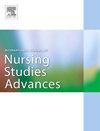中国护士工作满意度短指标的验证:经典测试理论与项目反应理论
IF 3.1
Q1 NURSING
International Journal of Nursing Studies Advances
Pub Date : 2025-03-22
DOI:10.1016/j.ijnsa.2025.100321
引用次数: 0
摘要
工作满意度短指数(SIJS)显示出良好的心理测量特性,并已在不同的文化背景下使用。然而,没有研究发现适应特殊人格的中国。中文版的SIJS有助于对工作满意度的跨文化理解,并为跨文化差异提供有价值的见解。目的。采用经典测试理论(CTT)和项目反应理论(IRT)对中国护士特殊人格障碍的心理测量特征进行评估。方法按世界卫生组织指南进行翻译。采用方便抽样法,共获得有效问卷636份。将收集到的数据均匀地分成两个相等的部分,一部分用于CTT分析,另一部分用于IRT分析。结果根据经典检验理论,SIJS的内容效度(S-CVI = 0.98)、结构效度(AVE = 0.50)和内部一致性信度(Cronbach's alpha系数= 0.76,McDonald's Omega = 0.80)均较好。Rasch分析表明,项目拟合度(所有反应类别对应的INFIT和OUTFIT的MnSq指数范围为0.767至1.406)、项目判别度(p值范围为0.060至0.831)和项目信度(人分离信度= 0.708)均为可接受的。结论通过CTT和IRT分析,本研究的结果表明,中文版的SIJS在应用于护士时具有良好的信度和效度。通过使用SIJS评估工作满意度水平,护理经理可以识别可能有倦怠或不满意风险的员工,允许他们采取适当的行动来缓解这些问题,促进积极的工作环境。本文章由计算机程序翻译,如有差异,请以英文原文为准。
Validation of the short index of job satisfaction in Chinese nurses: classical test theory and item response theory
Background
The Short Index of Job Satisfaction (SIJS) has demonstrated favorable psychometric properties and has been utilized across diverse cultural contexts. However, no studies adapting the SIJS to China were found. The Chinese version of the SIJS can contribute to a cross-cultural understanding of job satisfaction and provide valuable insight into cross-cultural differences. Purpose. To assess the psychometric properties of the SIJS among Chinese nurse, both classical test theory (CTT) and item response theory (IRT) were used.
Methods
The translation procedure followed the guidelines of the World Health Organization. A convenience sampling approach was used to obtain 636 valid questionnaires. The data collected were evenly partitioned into two equal segments, with one portion allocated for CTT analysis and the other for IRT analysis.
Results
According to classical test theory, the content validity (S-CVI = 0.98), construct validity (AVE = 0.50), and internal consistency reliability (Cronbach's alpha coefficient = 0.76, McDonald's Omega = 0.80) of the SIJS were good. Rasch analysis indicated acceptable item fit (MnSq indices ranging from 0.767 to 1.406 for the INFIT and OUTFIT corresponding to all response categories), item discrimination (p values ranging from 0.060 to 0.831), and item reliability (person separation reliability = 0.708).
Conclusions
The findings of this study demonstrate the favorable reliability and validity of the Chinese version of the SIJS when applied to nurses, as evidenced by both CTT and IRT analyses. By assessing job satisfaction levels using the SIJS, nursing managers can identify employees who may be at risk of burnout or dissatisfaction, allowing them to take appropriate actions to mitigate these issues and promote a positive work environment.
求助全文
通过发布文献求助,成功后即可免费获取论文全文。
去求助
来源期刊

International Journal of Nursing Studies Advances
Nursing-General Nursing
CiteScore
5.80
自引率
0.00%
发文量
45
审稿时长
81 days
 求助内容:
求助内容: 应助结果提醒方式:
应助结果提醒方式:


